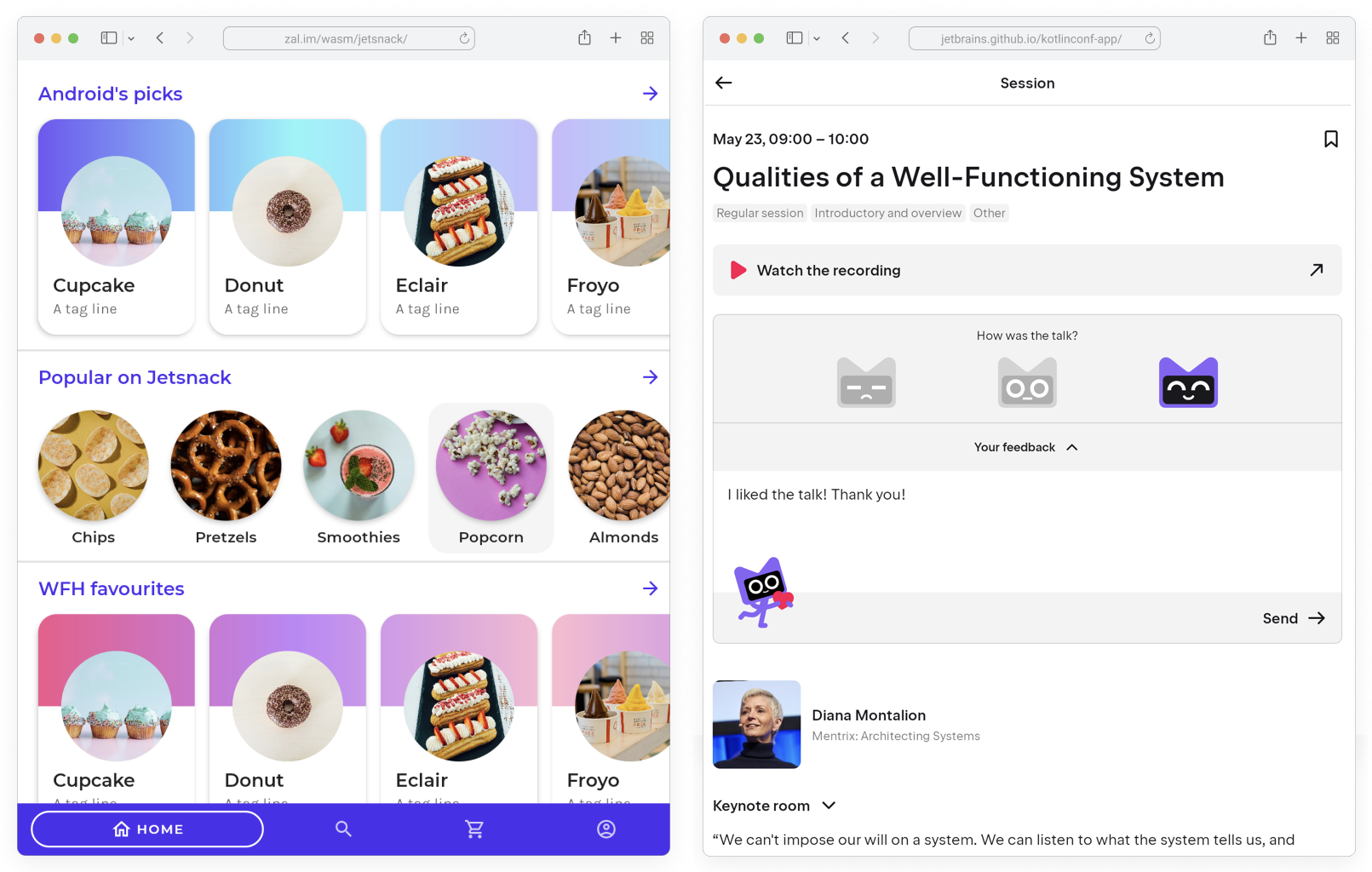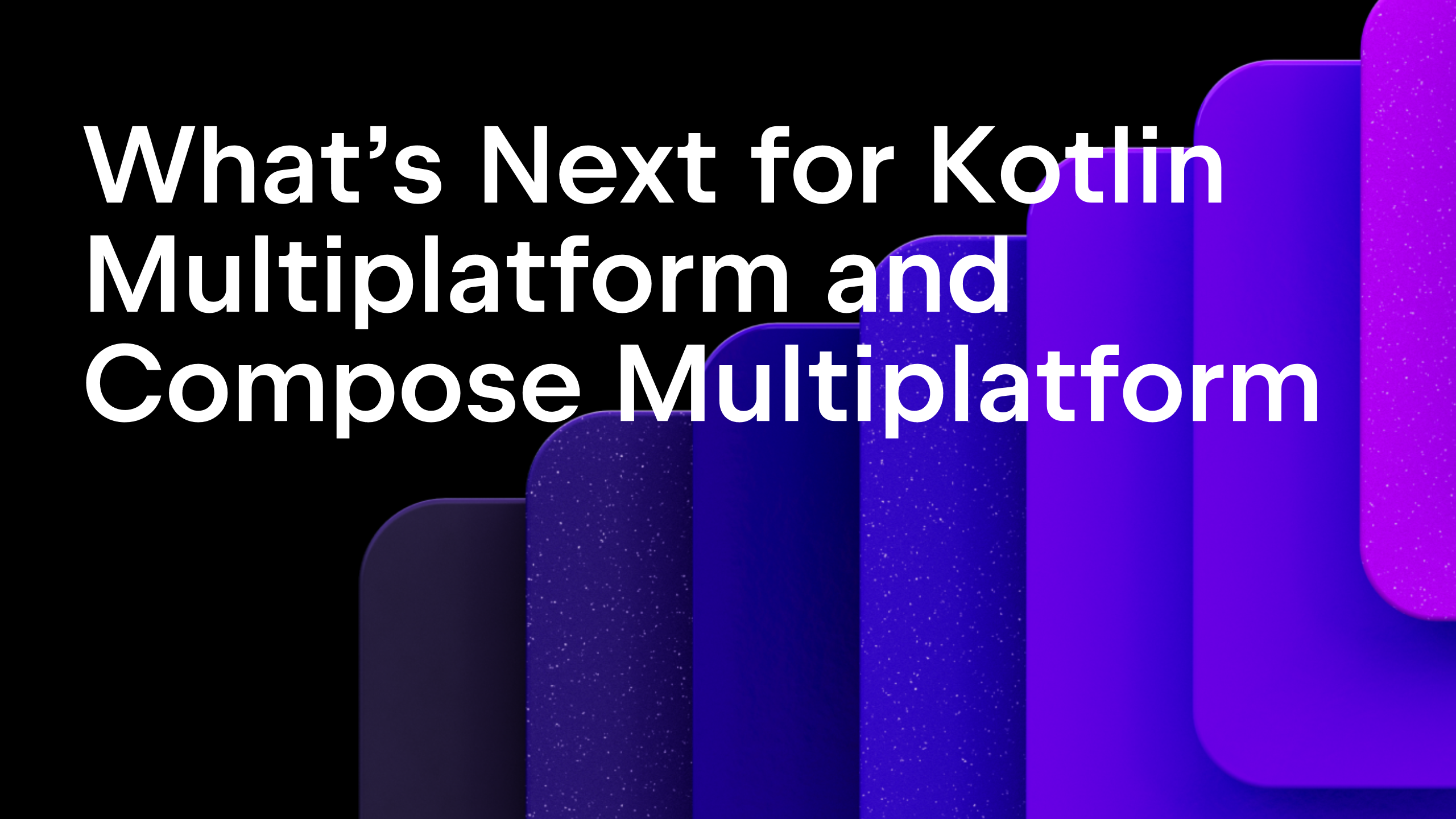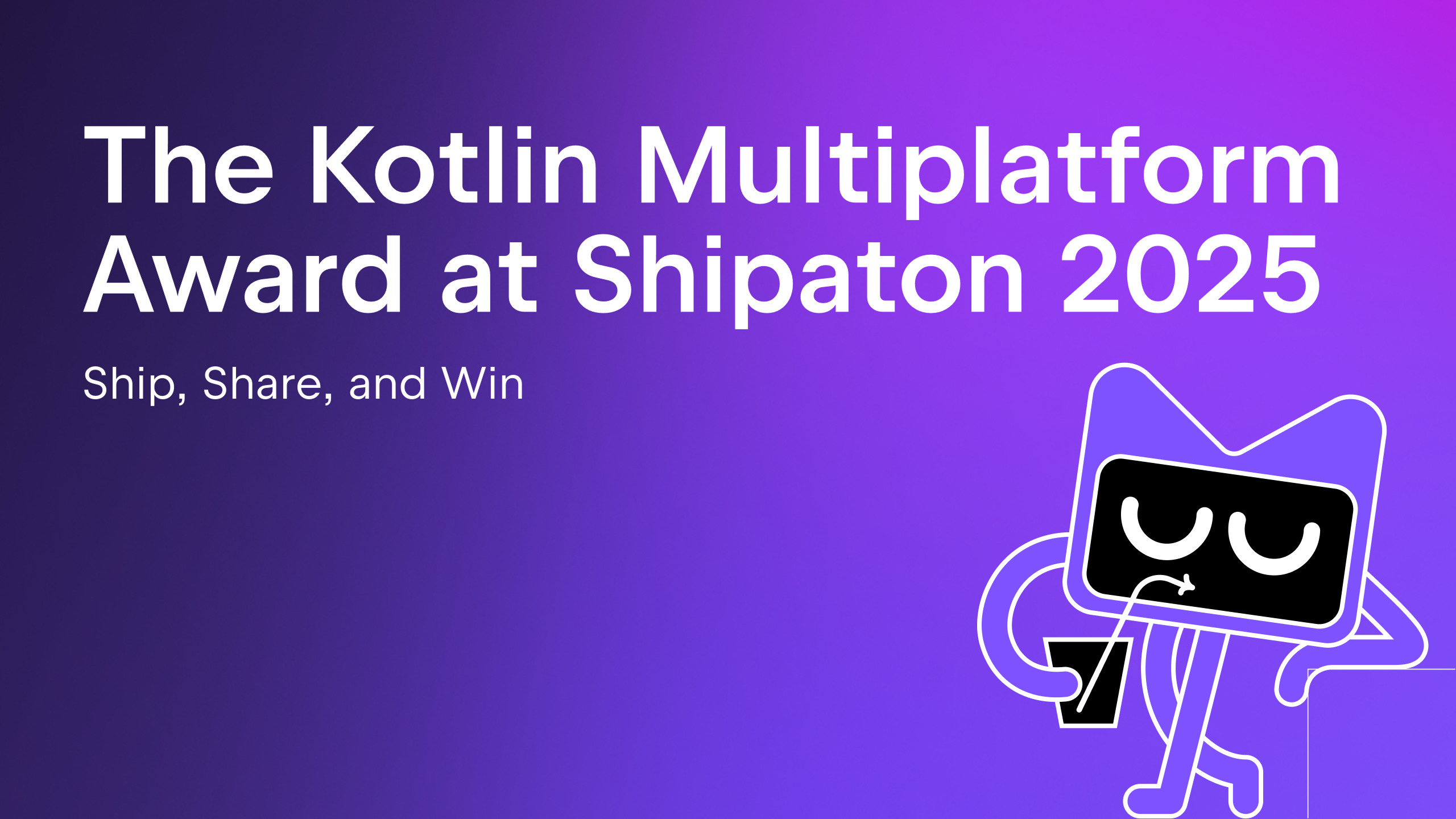Kotlin
A concise multiplatform language developed by JetBrains
Compose Multiplatform 1.9.0 Released: Compose Multiplatform for Web Goes Beta
Compose Multiplatform for web, powered by Wasm, is now in Beta! This major milestone shows that Compose Multiplatform for web is no longer just experimental, but ready for real-world use by early adopters.
This is more than a technical step forward. It’s a community achievement, made possible by feedback from early adopters of the Alpha version, the demos they built, and the contributions of open-source projects.
With the Beta release, you can now confidently bring your existing Compose skills and coding patterns to the web with minimal effort, creating new apps or extending ones from mobile and desktop.
Beyond Compose Multiplatform for web going Beta, the Compose Multiplatform 1.9.0 release also brings Android, iOS, and desktop improvements, showing that Compose Multiplatform is maturing into a truly unified UI framework.
Bringing your Compose code and skills to the web
With Compose Multiplatform, you can share most of your UI code and rely on the same Compose skills you already have from working on Android when building for the web – no need to learn a new UI toolkit. Out of the box, you get:
- Material 3 components for design fidelity, so your UI looks polished and modern.
- Adaptive layouts that resize seamlessly between different devices and screen sizes, with animations that make transitions feel smooth and natural.
- Browser navigation integration with forward and back buttons, deep links, and history.
- Support for system and browser preferences, like dark mode.
You can easily bring your Compose experience to the browser and start building web apps quickly.
Everything you need to build modern web apps
Compose Multiplatform for web now includes everything you need to build beautiful, reliable UIs for real-world apps in the browser:
- Core APIs that work on the web, available in common code.
- Interoperability with HTML for mixing Compose UI and native web elements.
- Type-safe navigation with deep linking.
- Fundamental accessibility support for assistive technologies.
- Cross-browser compatibility, including fallback for older browsers.
Compose Multiplatform 1.9.0 ensures the core API surface implementation works on the web and introduces targeted improvements to accessibility and navigation, alongside a wide range of bug fixes and developer experience enhancements (see the 1.9.0 What’s New page for details). With this Beta release of Compose Multiplatform for web, major APIs are stable enough for you to adopt them confidently, with minimal breaking changes expected in the future.
The foundation provided by this release is supported by a growing ecosystem of multiplatform libraries extending to the web. Many popular Kotlin libraries for networking, serialization, coroutines, and dependency injection already work across web platforms, and many community projects have already added support for Wasm. You can explore these in the official Kotlin Multiplatform catalog at klibs.io, where more and more libraries are being marked as web-ready all the time.
Development tools for better productivity
For developing web applications with Compose Multiplatform, you can use IntelliJ IDEA or Android Studio and you’ll get the most benefits with the new Kotlin Multiplatform plugin installed.
In addition to macOS, the Kotlin Multiplatform plugin for IntelliJ IDEA is now available on Linux and Windows, providing the full set of features for web, Android, and desktop development. The only exceptions are iOS and macOS targets, which require Apple hardware due to system limitations. For Android Studio, Windows and Linux support will be added later.
With the Kotlin Multiplatform plugin, you can:
- Create new projects with a web target, with shared or non-shared UIs, using the integrated project wizard.
- Run your apps in the browser right from the IDE, thanks to automatically created run configurations.
- Use gutter icons for web entry points to launch and debug your Compose apps instantly.
In addition, you can:
- Debug in the browser with custom formatters for a smoother experience in DevTools.
- Debug directly in IntelliJ IDEA Ultimate (2025.3 or later) with the JavaScript Debugger plugin. Note that currently only an EAP version of 2025.3 is available.
Together, these features make it easy to go from project setup to running and debugging your app – all without leaving the IDE.
Compose Multiplatform for web in action
The Kotlin Playground and the KotlinConf app are powerful examples of Compose Multiplatform for web in action, showing how you can bring Compose UIs directly into the browser.
Other demos worth exploring include:
- Rijksmuseum Demo – Museum collections in a rich, interactive UI.
- Jetsnack Wasm Demo – A playful sample e-commerce experience.
- Compose Material 3 Gallery – A showcase of Material 3 components built with Compose.
- Storytale – A storybook-style gallery for exploring, previewing, and sharing UI components.

These projects highlight the flexibility of Compose Multiplatform for web in use cases ranging from interactive prototypes to production-quality apps.
Get started with Compose Multiplatform for web
The easiest way to try Compose Multiplatform for web is with the Kotlin Playground. It doesn’t require any installation or setup. Just open your browser and start writing UI code:
If you’d like to use Compose Multiplatform for web in your IDE, simply follow our step-by-step guide:
Looking for ideas about what to build?
- Quickly build demos and prototypes – Spin up interactive proof-of-concepts, internal tools, or small experiments. You can leverage your existing Compose skills for fast results, which makes this perfect for testing ideas with your team.
- Create UI component galleries – Build living UI libraries in a storybook-style format, showcase reusable components, preview design systems, or share prototypes directly in the browser with no extra setup.
Influence the future of Compose Multiplatform for web
Compose Multiplatform for web is now in Beta. We see this release as the foundation for broader adoption, and with your feedback we’ll keep improving it on the path to a stable release.
Tell us what works well, what needs refinement, and what you’d like to see next. We’ll work alongside the community to polish features, fix bugs, and make Compose Multiplatform for web more reliable and enjoyable to use.
Share your thoughts in the #compose-web and #compose channels of our Kotlin Slack workspace and help shape the future of multiplatform development.
Compose Multiplatform beyond the web
Compose Multiplatform 1.9.0 also brings improvements for iOS, desktop, and common code.
iOS
You now have more control over performance and output. You can configure the frame rate to better balance smoothness and battery life, and also have the ability to customize text input behavior, which makes Compose apps feel more natural on iOS.
Desktop
Desktop apps gain new window management features, including the ability to configure windows before they appear, making it easier to manage multiple windows or custom layouts.
All platforms
For every target, the design and preview experience is becoming more powerful. Variation testing has been simplified thanks to more configurable previews, while deeper shadow customization gives you finer control over UI depth and style.
See the full list of Compose Multiplatform 1.9.0 updates on our What’s new page.
Read more
- Compose Multiplatform 1.9.0 – release notes on GitHub
- What’s new in Compose Multiplatform 1.9.0 – detailed release notes on the documentation portal
- Get started with Compose Multiplatform – a tutorial
- Compose Multiplatform and Jetpack Compose
Subscribe to Kotlin Blog updates







